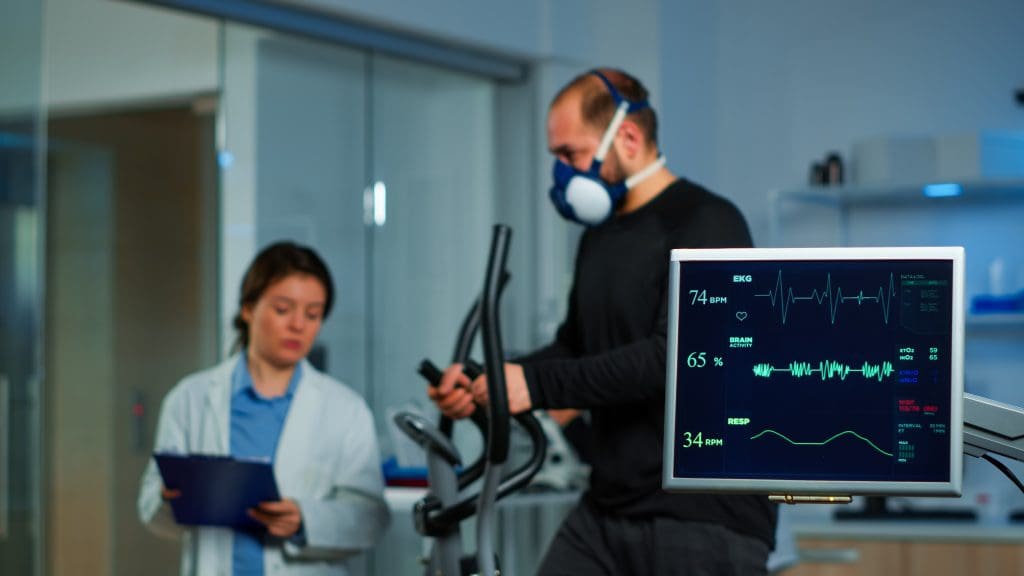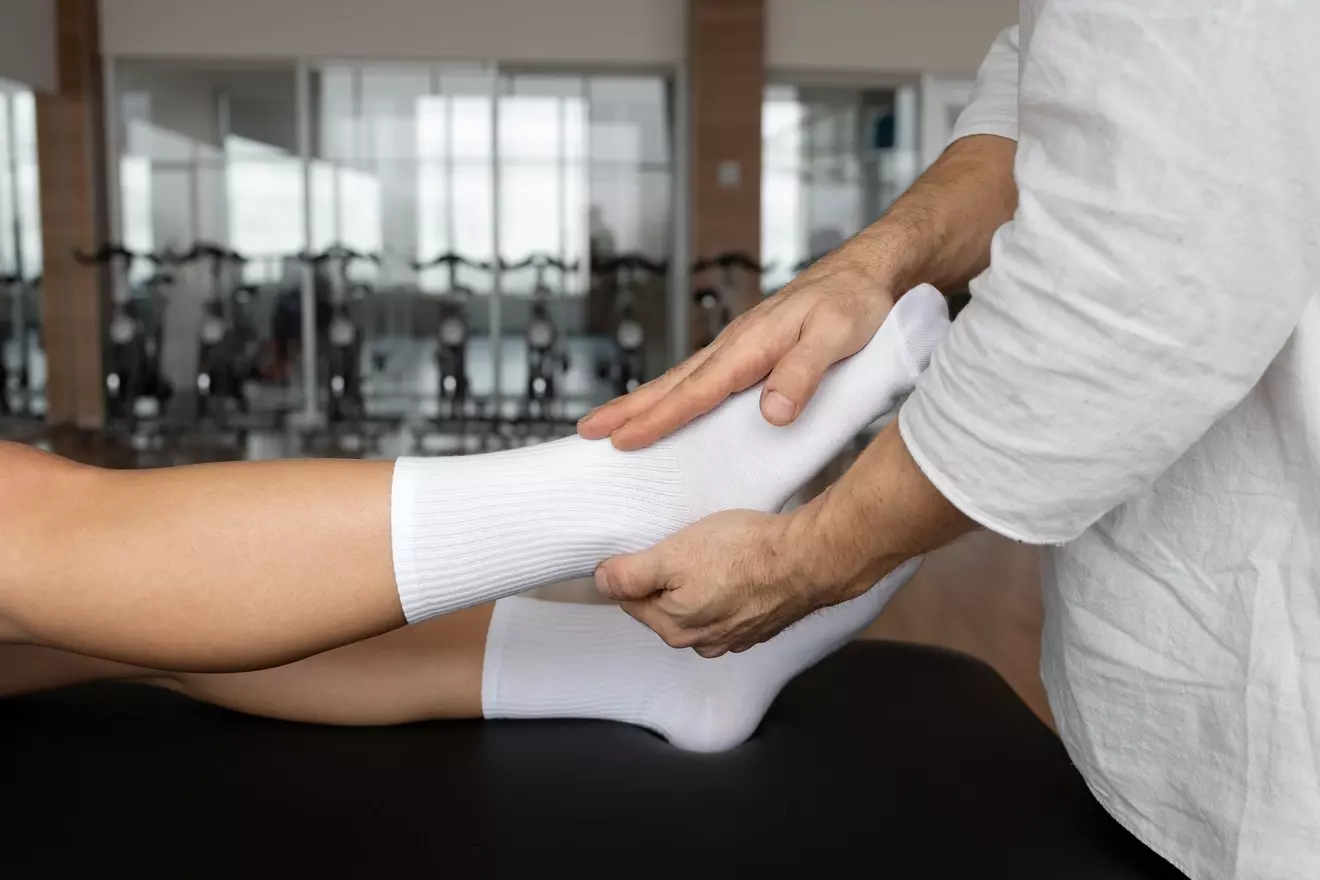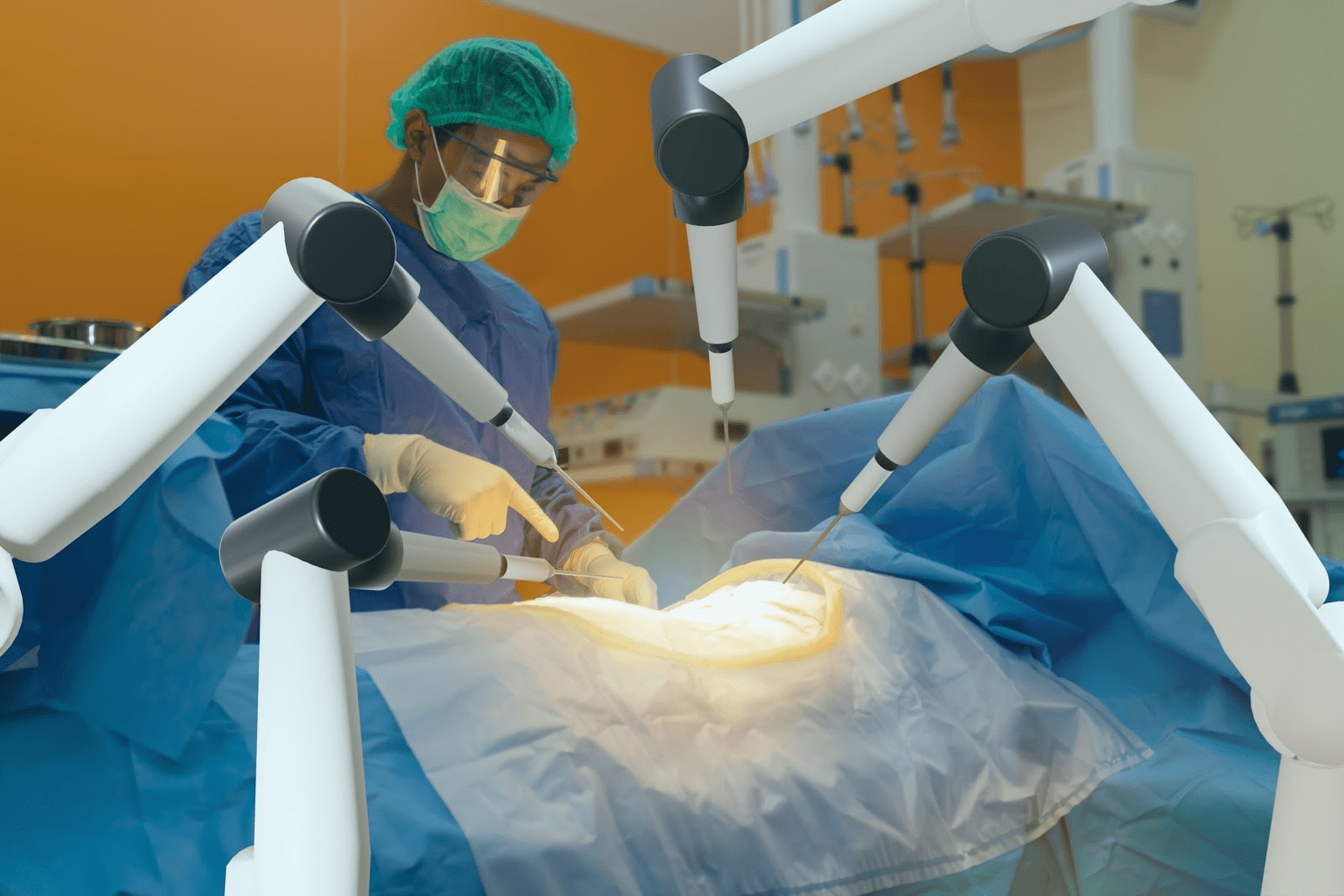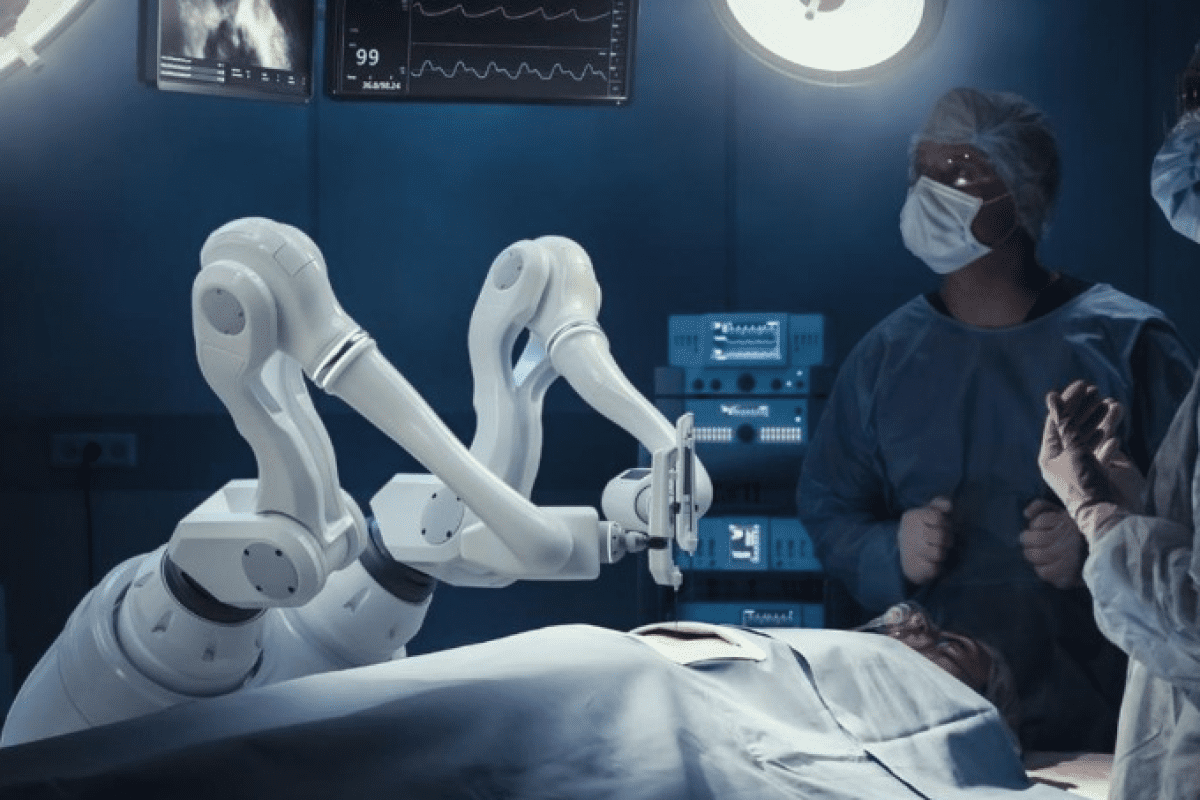Last Updated on November 27, 2025 by Bilal Hasdemir
Nearly 40% of patients who get radioactive iodine therapy see big changes in their heart rate during a nuclear stress test. This shows how key it is to know how radioactive iodine treatment affects heart health. It often raises the question, “How high does your heart rate get during a nuclear stress test? since the changes can vary from person to person.
A nuclear stress test is a key tool for checking heart function, mainly after iodine131 therapy. Those who have had RAI therapy should know how it might change their heart rate and overall heart health.
It’s important to understand these changes to manage health well after radioactive iodine treatment. Knowing the effects of this therapy helps patients handle their recovery better.
Key Takeaways
- Radioactive iodine therapy can significantly impact heart rate during a nuclear stress test.
- Understanding the effects of RAI therapy on cardiovascular health is vital.
- Patients should be aware of possible changes in heart rate after iodine131 treatment.
- A nuclear stress test is a key tool for checking heart function.
- Effective health management after radioactive iodine treatment needs understanding its effects.
Understanding Radioactive Iodine Treatment

Radioactive Iodine Therapy
For those with thyroid issues, radioactive iodine (RAI) therapy can be a game-changer. It’s a proven medical treatment for many thyroid problems.
What is Radioactive Iodine (RAI) Therapy?
RAI therapy uses iodine-131, a radioactive iodine isotope, to treat thyroid diseases. The thyroid gland takes in iodine, including the radioactive kind. This treatment aims to destroy thyroid cells, helping with hyperthyroidism and some thyroid cancers.
Common Conditions Treated with Radioactive Iodine
RAI therapy is often used for several thyroid issues, including:
- Hyperthyroidism: When the thyroid gland makes too much thyroid hormone.
- Thyroid Cancer: It treats certain thyroid cancer types, like papillary and follicular.
- Thyroid Nodules: RAI therapy can manage thyroid nodules in some cases.
| Condition | Description | RAI Therapy Application |
| Hyperthyroidism | Excess thyroid hormone production | Destroys part of the thyroid gland to reduce hormone production |
| Thyroid Cancer | Cancer of the thyroid gland | Targets and destroys thyroid cancer cells |
| Thyroid Nodules | Abnormal growths on the thyroid gland | Can be used to manage nodules that cause hyperthyroidism |
How RAI Works in the Body
When given, radioactive iodine is taken up by the thyroid gland. It then releases radiation, killing thyroid cells. This can lower thyroid hormone levels in hyperthyroidism or kill cancer cells. The body gets rid of the radioactive iodine through urine and saliva over time.
Knowing how RAI therapy works and its uses can help patients decide on treatment. It’s key to talk to a healthcare provider about its benefits and risks to see if it’s right for you.
The Procedure: What to Expect During Radioactive Iodine Treatment
The radioactive iodine treatment process has several steps. These include preparation and post-treatment care. Knowing these steps can make patients feel more at ease and ready for the treatment.
Preparation Before Treatment
Getting ready for radioactive iodine treatment is key. Patients often eat a low-iodine diet for 1-2 weeks before. This helps the thyroid gland absorb the radioactive iodine better. It’s important to tell your doctor about any medicines you’re taking, as some might need to stop before treatment. Also, avoid pregnancy and breastfeeding because radioactive iodine can harm the fetus or baby.
The Administration Process
The treatment is given orally, in capsule or liquid form. The dose is carefully chosen based on your condition and the treatment goal. After, you’ll stay in a special area for a while to keep others safe from radiation.
Immediate Post-Treatment Protocol
After treatment, follow certain rules to protect others from radiation. Avoid close contact with kids and pregnant women. Use your own utensils and toiletries. Drink lots of water to help get rid of the radioactive iodine. Your doctor will tell you how long to keep up these precautions, based on the dose.
Nuclear Stress Tests vs. Radioactive Iodine Treatment: Understanding the Difference
It’s important to know the difference between nuclear stress tests and radioactive iodine treatment. Both use radioactive materials but for different reasons. They affect patients in different ways.
Purpose and Function of Nuclear Stress Tests
A nuclear stress test checks how well the heart works when stressed. This stress can come from exercise or medicine. It helps doctors see if blood flows well to the heart muscle.
Doctors use a small amount of radioactive tracer for this test. This tracer goes into the bloodstream and builds up in the heart. A camera then takes pictures of the heart. This lets doctors see how it’s working and find any problems.
Heart Rate Expectations During Nuclear Stress Tests
During the test, patients either exercise or take medicine to make their heart rate go up. They aim to reach about 85% of their maximum heart rate. This helps doctors see how the heart handles stress.
Patients need to work hard during the test. But how hard depends on their health and the test’s rules.
How RAI Differs from Cardiac Nuclear Medicine
Radioactive iodine (RAI) treatment is for thyroid problems like too much thyroid hormone or thyroid cancer. It’s not just for checking the heart like nuclear stress tests. Instead, RAI is a treatment that uses radioactive iodine to shrink or remove part of the thyroid gland.
This treatment targets thyroid cells carefully, protecting other tissues. This shows how different nuclear stress tests and RAI treatment are.
In short, nuclear stress tests and radioactive iodine treatment both use radioactive materials but for different reasons. Stress tests check the heart, while RAI treats thyroid issues. Knowing this helps patients understand their treatments better.
Immediate Effects After Radioactive Iodine Treatment
radioactive iodine treatment side effects
After getting radioactive iodine treatment, it’s key to watch how your body reacts. You should also take steps to avoid exposing others to radiation. This treatment is good for thyroid issues but can cause some immediate side effects.
Physical Symptoms in the First 48 Hours
In the first 48 hours, you might feel tired, nauseous, or have a dry mouth. You could also notice changes in taste or feel like there’s a lump in your throat. These symptoms are usually short-lived and will go away once the radioactive iodine leaves your body.
Radiation Safety Precautions
To keep others safe, it’s important to follow some radiation safety rules. Stay away from people, kids, and pregnant women for a few days after treatment. Also, wash your hands well after using the bathroom and before eating.
- Sleep alone for the first few nights if possible.
- Maintain a distance of at least 3 feet from others.
- Avoid prolonged close contact with children and pregnant women.
Managing Initial Side Effects
Dealing with the first side effects of radioactive iodine treatment needs a mix of self-care and sometimes medical help. For nausea, try eating small meals often. Drinking lots of water is also important. For dry mouth, chewing sugar-free gum or sucking on sugar-free candies can help.
Knowing the immediate effects of radioactive iodine treatment and taking the right precautions can make the recovery period easier.
Life After Radioactive Iodine Treatment: The First Month
life after radioactive iodine treatment
Radioactive iodine treatment starts a new chapter in a patient’s life. It brings physical and emotional changes. Knowing what to expect can make the transition easier.
Common Physical Changes
In the first month, patients may feel tired, see changes in thyroid function, and notice effects on salivary glands. It’s important to watch these changes and tell a healthcare provider.
Changes in energy levels can be managed by taking breaks and resting enough. Following a healthcare provider’s advice on thyroid changes is also key.
Emotional and Psychological Impacts
The emotional and psychological effects of radioactive iodine treatment are significant. Patients might feel anxious, have mood swings, or feel depressed. Getting support from loved ones or mental health experts is helpful.
“The emotional journey after radioactive iodine treatment is as significant as the physical recovery. Support and understanding are key to navigating this period.”
Doing stress-reducing activities like meditation or yoga can help with emotional changes.
Activity Restrictions and Recommendations
After treatment, some activities are restricted to reduce radiation exposure and aid recovery. Patients are often told to avoid close contact with pregnant women and young children for a while.
| Activity | Recommendation |
| Exercise | Resume normal activities gradually, avoiding strenuous exercise initially. |
| Social Interactions | Limit close contact with others, specially pregnant women and children. |
| Work | Discuss return to work plans with a healthcare provider, considering the nature of the job. |
Following these guidelines helps ensure a smooth recovery and reduces risks.
Long-Term Physical Effects of Radioactive Iodine Therapy
Radioactive iodine therapy has long-term effects that people should know about. It’s used to treat thyroid issues like hyperthyroidism and thyroid cancer. The therapy uses radioactive iodine to destroy part or all of the thyroid gland.
Thyroid Function Changes
One major effect is a change in thyroid function. The treatment aims to lower thyroid hormone production. This often leads to hypothyroidism, where the thyroid doesn’t make enough hormone.
Hypothyroidism is usually treated with thyroid hormone replacement medication. The dosage of this medication must be adjusted over time. It’s important to regularly check thyroid hormone levels to ensure the right dosage.
Potential Impact on Other Body Systems
Radioactive iodine therapy can also affect other body systems. It might harm the salivary glands, causing dry mouth or changes in taste. Some people may also notice changes in energy levels or metabolism due to thyroid hormone changes.
It’s important for patients to talk to their healthcare provider about these possible effects. Not everyone will experience them, but knowing about them helps manage health after treatment.
Long-term Monitoring Requirements
Monitoring health long-term is key after radioactive iodine therapy. Regular visits to healthcare providers, including endocrinologists, are needed. Blood tests and other diagnostic tests may be required.
Patients should watch their health closely and report any big changes or symptoms. This proactive approach helps catch and manage any long-term effects early. It ensures the best quality of life after treatment.
Managing Hormonal Changes Post-RAI Treatment
hormonal changes after RAI treatment
Managing hormonal changes is key after RAI treatment. It helps patients recover well and stay healthy. The thyroid gland’s hormone-making ability can be hurt by RAI treatment. This leads to hormonal imbalances.
Hypothyroidism After RAI
Hypothyroidism is a common issue after RAI treatment. It happens when the thyroid gland can’t make enough thyroid hormones. This is because RAI treatment can damage the gland.
Symptoms of hypothyroidism include feeling very tired, gaining weight, dry skin, and feeling cold easily. It’s important for patients to know these signs. They should tell their doctor right away for the right treatment.
Hormone Replacement Therapy
Hormone Replacement Therapy (HRT) is needed for hypothyroidism after RAI. HRT uses synthetic thyroid hormones to replace what the gland can’t make.
- Levothyroxine is a common medicine for this.
- The dose is changed based on blood tests to get the right amount of hormone.
- It’s important to stick to the treatment plan to manage symptoms and avoid problems later.
Finding Your Optimal Medication Dosage
Finding the right dose of hormone replacement takes time and regular checks. Regular blood tests are key to see how thyroid hormone levels are. This helps adjust the dose as needed.
Patients should work closely with their doctor to:
- Watch for any changes in symptoms.
- Have regular blood tests to check hormone levels.
- Change the dose if needed to keep hormone levels right.
By managing hormonal changes after RAI treatment, patients can greatly improve their life. They can also lower the chance of long-term health problems.
Dietary Considerations After Radioactive Iodine Treatment
After radioactive iodine treatment, it’s key to focus on your diet. This helps your body recover and stay healthy. You should watch your iodine intake and eat foods that help you get better.
Iodine Restrictions and Requirements
After treatment, knowing about iodine in your diet is important. Iodine restrictions are often needed to make sure the treatment works right. You might need to limit how much iodine you eat for a while.
Adults should not have more than 150 mcg of iodine a day. Foods like iodized salt, seaweed, and some fish are high in iodine. Always check food labels and don’t eat too much of these foods.
Foods That Support Recovery
Managing iodine is just part of the story. Eating nutrient-dense foods also helps you recover. Include fruits, vegetables, whole grains, lean proteins, and healthy fats in your diet. These foods give you important vitamins, minerals, and antioxidants that help you heal and stay healthy.
| Food Group | Examples | Benefits |
| Fruits | Apples, Berries, Citrus Fruits | Rich in Vitamins and Antioxidants |
| Vegetables | Leafy Greens, Cruciferous Vegetables, Carrots | High in Fiber and Essential Vitamins |
| Proteins | Lean Meats, Fish (low iodine), Eggs, Legumes | Supports Muscle Health and Repair |
Nutritional Supplements to Consider
While a balanced diet is essential, some nutritional supplements might be suggested. These could include selenium, vitamin D, and omega-3 fatty acids. But, always talk to a healthcare provider before taking any supplements.
Some supplements can interact with medicines or harm certain people. So, getting advice from a healthcare professional is very important.
Exercise and Physical Activity Following RAI Therapy
After RAI therapy, it’s important to plan your exercise and physical activity carefully. You need to balance your desire to stay active with your body’s healing process.
When to Resume Normal Activities
Most doctors suggest starting to do normal activities again slowly after RAI therapy. How soon you can start depends on your health, the treatment details, and your doctor’s advice.
Key considerations include:
- Listen to your body and don’t overdo it
- Begin with gentle activities and slowly increase the intensity
- Avoid hard activities that might make you tired or hurt you
Recommended Exercise Types and Intensity
The kind and how hard you can exercise depends on your health and how you feel after treatment. At first, low to moderate intensity exercises are usually best.
Good activities to start with are:
- Brisk walking
- Swimming or water aerobics
- Cycling on flat terrain
- Yoga or Pilates for flexibility and strength
Monitoring Your Body’s Response to Activity
It’s important to watch how your body reacts to starting to be active again. If you feel very tired, in pain, or have trouble breathing, talk to your doctor right away.
Monitoring tips:
- Keep a log of what you do and how you feel
- Change your activity level based on your energy
- Drink plenty of water and eat well to help your body heal
Emotional Wellbeing and Mental Health After Treatment
Managing emotional changes after radioactive iodine treatment is key for recovery and mental health. Patients may feel a mix of emotions, from relief to worry about their health.
Coping with Body Changes
After radioactive iodine treatment, patients may notice body changes. These can include weight gain or loss, fatigue, and other symptoms. These changes can affect their self-esteem and mental health.
Coping Strategies:
- Stay Connected: Keep in touch with family and friends for support.
- Healthy Lifestyle: Stay active and eat well to boost wellbeing.
- Mindfulness: Try meditation or yoga to lower stress and anxiety.
Managing Treatment-Related Anxiety
Many patients feel anxious after radioactive iodine treatment. This anxiety can come from health worries, treatment doubts, and fears of long-term side effects.
Anxiety Management Techniques:
| Technique | Description |
| Cognitive Behavioral Therapy (CBT) | Helps change negative thoughts that cause anxiety. |
| Relaxation Techniques | Deep breathing, muscle relaxation, and visualization can help calm anxiety. |
| Support Groups | Being part of a support group can offer a sense of community and understanding. |
Support Resources and Communities
Access to the right support is critical for emotional wellbeing and mental health after treatment. Patients can find help from:
- Professional counseling or therapy.
- Online forums and support groups.
- Educational materials and resources from healthcare professionals.
By using these resources and adopting healthy coping strategies, patients can face the emotional challenges after radioactive iodine treatment.
Fertility and Family Planning Considerations Post-RAI
It’s important to know how RAI treatment affects fertility. Radioactive Iodine therapy is good for treating thyroid issues but can impact reproductive health.
Impact on Reproductive Health
RAI treatment uses radioactive iodine to destroy thyroid parts. This can affect the reproductive system. The impact on fertility varies, depending on the RAI dose and overall health.
Key Considerations:
- The risk of temporary or permanent fertility impacts
- Talking to a healthcare provider about fertility before RAI treatment is key
- Radiation exposure can affect reproductive health
Recommended Waiting Periods
Healthcare providers suggest waiting before trying to conceive after RAI. The waiting time depends on the RAI dose and individual health.
General Guidelines:
- Men should wait 3 to 6 months
- Women may need to wait 6 to 12 months, based on treatment details
Options for Family Planning
Those getting RAI treatment have family planning options. These include:
- Cryopreserving sperm or eggs before treatment
- Talking to a fertility specialist about risks and benefits
- Looking into adoption or surrogacy as alternatives
It’s vital to talk to healthcare providers to find the best option for you.
Understanding RAI’s effects on fertility and family planning helps patients make informed choices. Talking to healthcare professionals and discussing your situation is essential for post-RAI family planning.
Follow-up Care and Monitoring After Radioactive Iodine Treatment
The journey doesn’t end with radioactive iodine treatment. It’s just the start of many follow-up care appointments and monitoring. Good follow-up care is key to manage side effects, check treatment success, and keep health in check.
Essential Medical Appointments
After radioactive iodine treatment, patients must go to follow-up medical appointments. These visits are important for:
- Checking thyroid function and overall health
- Talking about any concerns or side effects
- Changing treatment plans if needed
These meetings usually include a detailed check-up and a chat with your doctor about how you’re doing.
Blood Tests and Imaging
Blood tests and imaging studies are key parts of follow-up care. They help in:
- Checking thyroid hormone levels
- Finding any changes in thyroid function
- Watching for any complications
Imaging studies, like ultrasound or radioactive iodine scans, check the thyroid gland for any issues.
Signs That Warrant Medical Attention
It’s important for patients to know signs that need immediate medical attention, such as:
- Severe neck pain or swelling
- Difficulty swallowing
- Big changes in heart rate or rhythm
Spotting these symptoms early can stop serious problems and ensure quick help.
Potential Complications and How to Address Them
It’s important to know about complications after radioactive iodine treatment. This treatment is usually safe but can have risks. Knowing these risks helps patients and doctors take steps to prevent them.
Common Long-term Side Effects
Some people may face long-term side effects. These can include:
- Permanent hypothyroidism, needing lifelong hormone therapy
- Dry mouth or dental issues from the treatment’s effect on glands
- Changes in taste or smell
- Neck tenderness or swelling
A study in a Journal found that hypothyroidism is common. Patients need regular thyroid function checks.
“The incidence of hypothyroidism after radioactive iodine treatment is significant, stressing the need for long-term follow-up.”
| Common Side Effects | Management Strategies |
| Permanent Hypothyroidism | Lifelong thyroid hormone replacement therapy |
| Dry Mouth/Dental Issues | Regular dental check-ups, saliva substitutes |
| Changes in Taste/Smell | Dietary adjustments, avoiding strong-smelling foods |
Rare but Serious Complications
Some serious but rare complications can happen. These include:
- Severe allergic reactions
- Swelling in the neck that can cause breathing trouble
- Significant changes in blood counts
It’s vital for patients to know about these risks. They should seek medical help right away if they have severe symptoms.
When to Seek Emergency Care
Seek emergency care if you have:
- Difficulty breathing or shortness of breath
- Severe pain or swelling in the neck
- Signs of an allergic reaction, such as hives or itching
Quick medical help can greatly improve outcomes if a serious complication happens.
In summary, while radioactive iodine treatment works for many, knowing the risks is key. Regular check-ups and quick reporting of symptoms can help manage these risks.
Conclusion: Embracing Your New Normal After RAI Treatment
After radioactive iodine treatment, patients need to adjust to a new way of life. This includes making lifestyle changes, taking medication, and following up with doctors. Managing thyroid function, side effects, and overall health is key.
Starting this new chapter can be tough, but with the right attitude and support, it’s doable. Recovery from RAI treatment takes time, patience, and active care. Knowing about long-term effects and managing them helps you live well.
It’s important to stay informed and involved in your care. Ask questions and seek help when you need it. This way, you can manage your condition and enjoy life after RAI treatment.
FAQ
What is radioactive iodine treatment used for?
It treats thyroid issues like hyperthyroidism and thyroid cancer.
How does radioactive iodine treatment work?
It destroys part or all of the thyroid gland, depending on the condition.
What are the common side effects of radioactive iodine treatment?
Side effects include fatigue, dry mouth, and changes in thyroid function.
How long does it take to recover from radioactive iodine treatment?
Recovery time varies. Most people can get back to normal in a few days to a week.
Are there any dietary restrictions after radioactive iodine treatment?
Yes, follow a low-iodine diet before and after. Avoid close contact with other for a few days.
Can I exercise after radioactive iodine treatment?
Avoid strenuous exercise for a few days. Light activities can usually be resumed soon after.
How will radioactive iodine treatment affect my thyroid function?
It can cause hypothyroidism, where the thyroid doesn’t produce enough hormone. This may need hormone replacement therapy.
Will I need to take thyroid hormone replacement medication after radioactive iodine treatment?
Yes, many patients need thyroid hormone replacement medication for life after treatment.
Can radioactive iodine treatment affect fertility?
It can affect fertility. Patients are advised to wait before trying to conceive.
How often will I need to follow up with my doctor after radioactive iodine treatment?
Regular follow-up appointments are needed to monitor thyroid function and adjust medication as needed.
Are there anylong-term risks associated with radioactive iodine treatment?
While safe, it can have long-term risks, including impacts on other body systems and a small increased risk of certain cancers.
Can I undergo radioactive iodine treatment if I have a pre-existing medical condition?
The decision depends on individual circumstances, including pre-existing medical conditions. Discuss with a healthcare provider.






